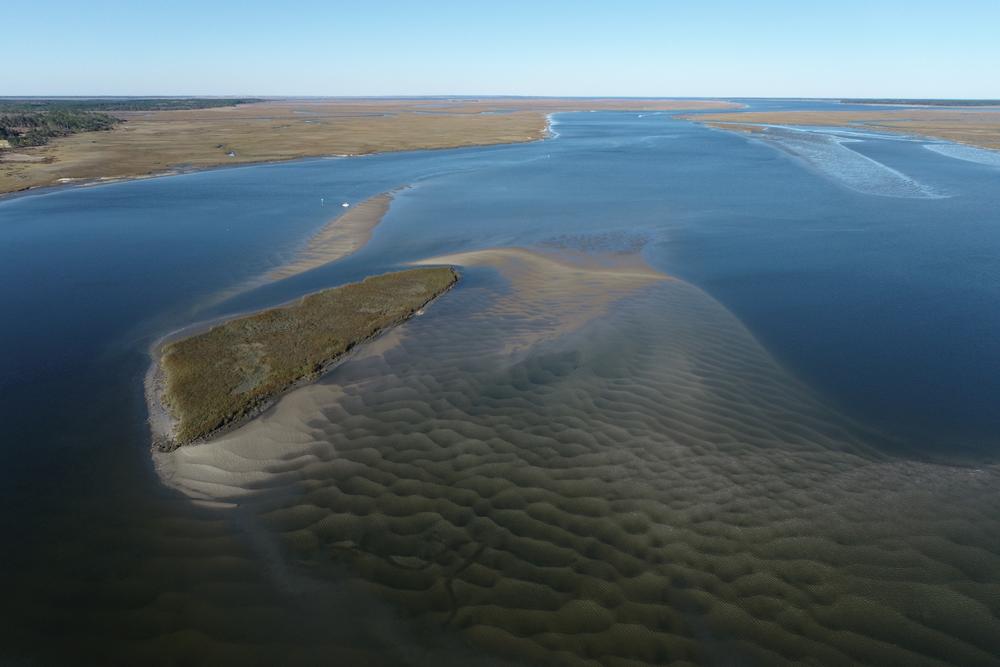
Caption
The Intracoastal Waterway, a 3,000-mile inland waterway stretching from Massachusetts to Texas, is seen along Georgia's coast.
Credit: Georgia Department of Natural Resources
|Updated: April 27, 2023 3:21 PM
LISTEN: Environmental researchers assessed the health of Coastal Georgia's ecosystem in 2022 as "moderately good." GPB's Benjamin Payne reports.

The Intracoastal Waterway, a 3,000-mile inland waterway stretching from Massachusetts to Texas, is seen along Georgia's coast.
Coastal Georgia's ecosystem received a relatively clean bill of health for 2022, as the state's Department of Natural Resources gave it a “B” grade in the agency's annual Ecosystem Report Card.
Four indexes were used to determine the score: sea turtle health (which includes nesting and hatching), bird health (bald eagles, wood storks and American oystercatchers), aquatic life (shrimp, red drum and blue crabs) and water quality (dissolved oxygen, fecal coliform and enterococcus).
The grade was a slight decline from the previous year's “A-,” which DNR Coastal Resources Division program manager Jan MacKinnon attributed to a “marked drop” in the blue crab score (18%, down from 2021's 100%) and the bald eagle score (48%, down from 2021's 62%).
“Climate factors like salinity shifts are really impactful to some indicators, and it showed up in blue crabs this [past] year,” said MacKinnon, who added that higher water salinity — which is correlated with lower rainfall — likely drove blue crabs to migrate to other areas located away from the DNR's sampling stations.
Bald eagles were hit hard by avian flu, which the species contracts by feeding on dead or sick waterfowl infected with the virus. Additionally, only 50 eaglets fledged, compared to the roughly 80 that the coast typically sees.
Sea turtles had a banner year, as nesting notched a perfect score and hatching saw its highest score since 2014, when the DNR began compiling its report cards.
Researchers attributed the species' success to nest protection and predator management programs, as well as an absence of major storm events.
The agency noted gains in land conservation, as the DNR added more than 24,000 acres of conserved land to the Ceylon Wildlife Management Area in Camden County, which it noted is home to important species, including bald eagles, gopher tortoises, wood storks and Florida manatees.